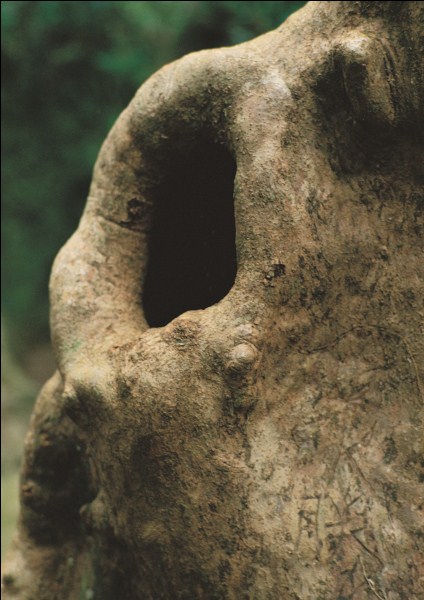Dear Integral Meditators,
This weeks article looks at the inflow and outflow of love in our life, and how we can start to make conscious, meditative adjustments to improve this flow for the better, I hope you enjoy it.
Yours in the spirit of benign flow,
Toby

The Energetic Dynamics of Love
The fundamental energy dynamics of love are those of giving and receiving. In order to be a love giver, there needs to be enough love being received within your being in order for you to give. When speaking of love in this article, I am simply referring to feelings of warmth and friendship, care and benevolent attention. There are four basic levels of receiving and giving love that we will be looking at:
- In our relationship to self
- In our relationship to others
- In our relationship to the world and the Cosmos at large
- A synthesis of the above three
Receiving love from self
All of us have blocks in our relationship to ourself; things that we don’t like about ourself, reasons why we withhold love from ourself and so forth. However, learning to receive love from ourself is really an act of great simplicity. It is just a matter of sitting quietly, bringing our attention onto ourself and our body, relaxing our chest and heart area, and allowing ourselves to receive the natural healing and caring energy that starts to flow when we focus our attention gently upon ourself without judgement. The act of directing conscious caring attention toward ourself is in itself an activity that naturally directs love toward ourself. We then simply need to sit within that space and allow ourselves to receive that energy from…ourself. You can try it right now it is really as simple as that!
Giving love to self
Once we have some basic familiarity with receiving love from self, we can then practice giving love toward self, which is really just a slightly more active and dynamic way of receiving love from self. When actively giving love toward myself, I normally just raise the corners of my mouth a couple of millimeters, so that the expression on my face is in a half smile. This half smile carries a natural positive warmth and friendship that I then direct toward myself, breathing it in as I inhale, feeling the energy expand thru-out my body as I exhale.
We are all communal beings, and tend to define ourselves to a greater or lesser degree by our relationships to others, but it is surprising how much healthy, loving energy we can create within ourself just by paying attention to the above two practices. This then gives us a healthy “not overly needy” basis upon which we can then practice giving and receiving love from others.
Receiving and giving love from and to others
If we habitually block love from ourself to ourself, we can also bet that we also habitually block the reception of love from others to us, and deprive ourselves of the positive support we could be receiving from them. To practice receiving love from others, just think about the people who love and like you, friends and family. All of them have a loving intention toward you (even if sometimes on the surface there is annoyance etc…). At any time we choose we can simply be aware of this positive, loving intention from those that are close to us, and open our hearts and minds to receiving that energy fully. It is energy that is available to us all the time (even if we are not always physically close to them) that we can benefit simply by being aware of and opening to.
Consistent awareness of this flow of love toward us practiced over time gives us an inner feeling of having a lot of love inside us, and consequently, in our relationships with others it becomes more and more easy to give love to others, both as an act of awareness in meditation, and as actual acts of kindness and generosity in the world.
Practices together in a balanced way, receiving and giving love should actually build upon each other, creating an ever increasing cycle of love and care in your life.
Receiving and giving love from the Universe
In this world there is a lot of free energy around, in the sense of ambient life force and life-giving subtle energy. I became most prominently aware of this when I started a Qi gong practice over fifteen years ago, and saw how it is possible to receive huge amounts of energy from the universe (that is already there) just through attuning my awareness to it, and learning to direct that energy into and through my body.
Similarly, there is a huge (infinite?) amount of ambient love and warmth on a universal level that we can start tapping into just by becoming aware of it, opening to it, and allowing ourself to receive it.
Essentially it seems to be the loving energy of a creative source (conceptualized by some as God, or alternatively for example that which Was, before the big bang) which flows naturally out into creation, and we can be on the receiving energy of that energy just through an act of conscious awareness.
I remember being in Brazil one time and passing a river where a whole line of small alligators were lined up at the bottom of a small waterfall with their mouths open, waiting for the fast current to wash fish into their mouths. Receiving love from the universe is a bit like this; you just open your heart (like the alligators mouth), and let the love flow in.
Once you have a sense of receiving love from the universe in this way, you can then practice giving love to the Universe, just as an act of joy and communion.
A short integral or synthesis meditation on giving and receiving love
Once you have a sense of the above three ways of giving and receiving love, you can then use a very simple breathing exercise to facilitate that flow in your meditation:
- As you breathe in, feel yourself receiving love from yourself, from others, from the Universe into your heart and mind. If you like you can see that loving energy as a light in your heart being fed and brightened by streams of energy coming into your body as you inhale.
- As you breathe out see and feel yourself giving love out from your heart-space; to yourself, to others in your life, and to the Universe at large.
© Toby Ouvry 2012, you are welcome to use or share this article, but please cite Toby as the source and include reference to his website www.tobyouvry.com
Follow Toby on: LinkedIn, YouTube, Instagram
Integral Meditation Asia
Online Courses * 1:1 Coaching * Books * Live Workshops * Corporate Mindfulness Training *Life-Coaching * Meditation Technology
 The nature purpose of training in concentration
The nature purpose of training in concentration Resting in Safety, Thriving on Risk
Resting in Safety, Thriving on Risk The Tibetan tantras invite us to transform our attachment into a mind of “great bliss”, and in doing so take one of the main causes of our bondage to delusions and change it into a cause of enlightenment. What is a mind of “great bliss” sounds pretty exciting and pleasurable right? To experience an authentic state of great bliss is to experience the primal energy of divine creativity emerging from the emptiness of our causal, or very subtle, formless awareness. Another way of putting it is to say that the mind of great bliss is the cosmic version of our everyday mind of caring, loving and being compassionate.
The Tibetan tantras invite us to transform our attachment into a mind of “great bliss”, and in doing so take one of the main causes of our bondage to delusions and change it into a cause of enlightenment. What is a mind of “great bliss” sounds pretty exciting and pleasurable right? To experience an authentic state of great bliss is to experience the primal energy of divine creativity emerging from the emptiness of our causal, or very subtle, formless awareness. Another way of putting it is to say that the mind of great bliss is the cosmic version of our everyday mind of caring, loving and being compassionate.



 Meditation Workshop: An Introduction to Meditation From the Perspective of Tibetan Buddhism
Meditation Workshop: An Introduction to Meditation From the Perspective of Tibetan Buddhism